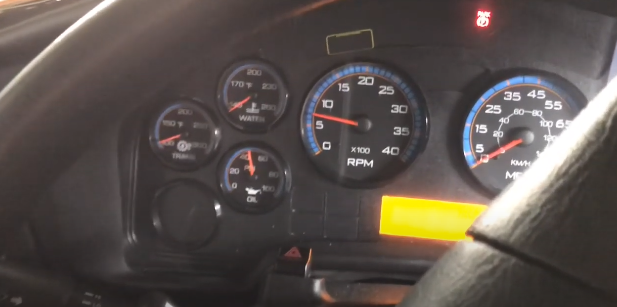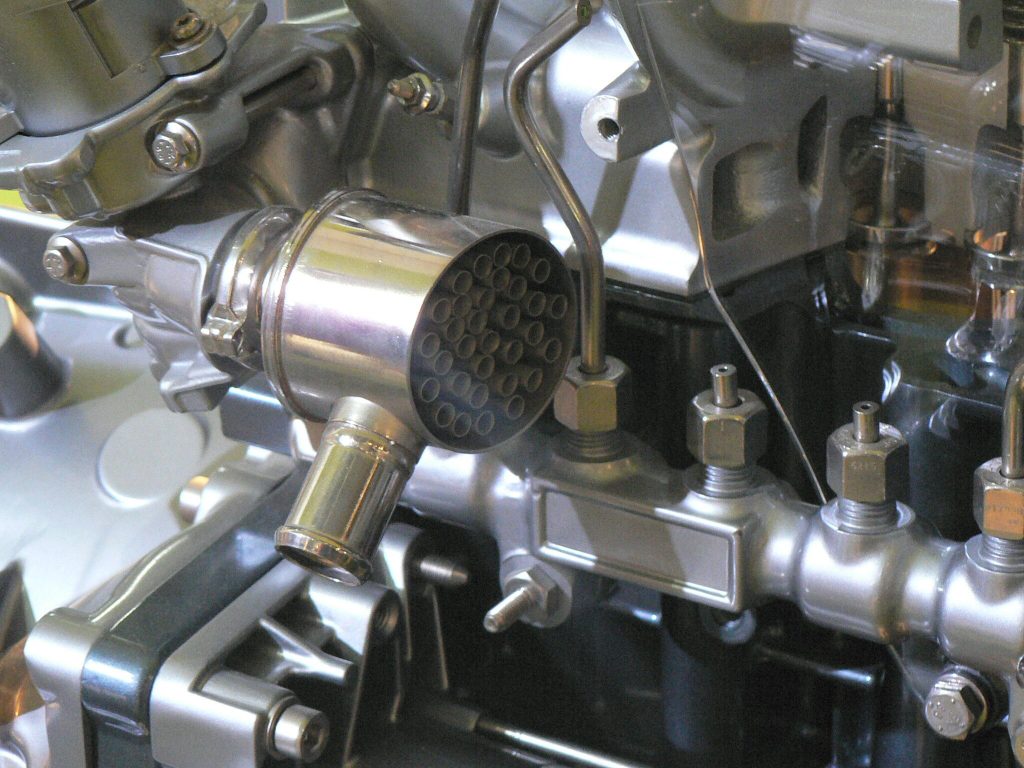Navistar International developed the Maxxforce 13 engine to meet the needs of truckers. The Maxxforce 13 engines promised truckers many happy driving years with impressive responsiveness, high fuel economy, and smooth performance. However, many truckers had to remove the EGR due to problems with the EGR. We will be focusing on Maxxforce 13 EGR deletion problems.
Maxxforce DPF delete
Maxxforce DPF delete tuning will remove the entire regen system and allow you to straighten your Exhaust.
Maxxforce EGR delete
EGR can cause excessive soot to build up in the intake manifold. Turbo becomes sticky and is less agile than when it was clean, affecting your engine’s performance and life expectancy. Maxxforce EGR deletion tuning will remove your EGR valve and sensors from ECM software. To prevent gases from entering the EGR manifold, you only need to place block-off plates.
Maxxforce EGR Issues

Navistar has designed the Maxxforce 13 engine with advanced EGR technology to operate without additional equipment placing more payloads on your machine.
Here are some solutions to the Maxxforce 13 EGR problems.
PROBLEM 1 – Black Smoke from the Exhaust
EGR’s primary function is to reduce engine nitrogen oxide emissions. The EGR allows the cool exhaust gas to be pumped into the air intake duct to prevent nitrous oxide from forming. Black Smoke is visible from the Exhaust.
You will need to find the EGR valve on your Maxxforce 13 engine and clean it, making it easy to follow the steps below easy if you follow the steps below.
- Clean all surfaces in contact with the gasket to ensure it seals correctly.
- Replace any damaged parts and check the EGR system for leaks.
- Check your truck’s service manual for the location of the valve.
- To remove dirt and grime buildup, clean the EGR cooler intake fins.
These steps will allow the rear EGR cooler valve to open again without problems. Cleaning the system will also stop black smoke from appearing.
PROBLEM 2 – Low Power from Maxxforce 13 Engine, but no error codes displayed
The EGR valve may be ineffective whenever the Maxxforce 13 suddenly shows a reduced power output but not an error code. Ensure that the EGR valve closes correctly by cleaning with a solvent. After completing these steps, you will realize an improvement in power levels.
To clean the EGR valve, you can use the cleaning management software. These are the steps to follow:
- Drain excess fluids and place the vehicle within a few meters of a drain.
- Turn off the heater pump.
- Plug the cleaning management system into a 110V socket.
- Fill the cleaning management system reservoir with 5 gallons of water. Next, add two cans of 2.5-gallons of EGR cleaning solvent.
- To warm up the cleaning solution, turn on the heater
- Follow the steps in your truck’s manual to remove heat shields, EGR valves.
- To remove any debris, clean the EGR cooler outlet.
- Remove the bolts holding the EGR outlet tubes to the EGR module cover.
- Replace the gaskets. Remove all debris and replace bolts.
PROBLEM 3 – The EGR cooler at high temperature or low temperature is leaking and must be replaced

The Maxxforce 13 EGR must be correctly aligned to ensure proper performance. Coolant leakage can occur if the alignment is incorrect, leading to engine failure.
Once the coolant has been changed, the EGR cooler alignment tool replaces the EGR Cooler ensuring that its assembly is in the correct alignment and has no leakage.
To complete the action, follow these steps:
- After referring to the truck’s manual, remove the EGR cooler from the engine.
- Place the EGR cooler assembly on the EGR cooler alignment device using a vice. Then, tighten the vice jaws.
- Replace the socket screws and washers.
- Clean the mating surfaces between the mid-plates and the EGR coolers at high- or low temperatures.
- After the process is complete, secure the cooler halves and remove the more excellent assembly from the alignment tool.
PROBLEM 4 – EGR Cooler Heat exchanger Leak Causes Excessive Pressure
The EGR cooler system must maintain temperatures below a specific temperature and a certain pressure level. A cooler that fails can cause pressure buildup to reach 25 psi. The radiator can become clogged with coolant, which can be checked by taking a sample and examining the coolant.
The Navistar International coolant tool is a great option to prevent this from happening. This tool makes it much easier to maintain the Maxxforce 13 EGR’s complex cooler system. It will also help you prolong the life of your engine. Coolant tools use adaptors to create a strong vacuum from standard air to force coolant out of the entire system.
The system can then be tested for pressure and repaired if necessary. The vacuum module is then installed to ensure no air is trapped within the system. Heat can cause cooling system damage by the presence of air.
How Navistar fixed its Maxxforce 13 EGR problems
Navistar made several engine modifications to try and fix the problems. The company changed its first thing to hardwire the connection to the turbo air control valve, reducing the chance of becoming loose or dislodged.
The shaft was 30% longer, a reason for it to be less likely for it to stick. The manufacturer increased the exhaust valves of the EGR cooler and removed some broken edges from the device, which was causing damage to some components.
Navistar offers a Diamond Renewed program that accepts used trucks and repairs them with improvements to the EGR. You don’t need to worry if your Navistar International Maxxforce truck is older than 2013.
Do You Need to Disable Your Maxxforce EGR
Truck owners should consider alternative solutions to these problems, and one trendy option is EGR delete to shut down your system entirely.
The installation of steel blocking plates in the EGR cooler physically blocks any exhaust flow to the intake. The electronic computer unit must be reprogrammed by a specialist, open and flash the ECU. Truck owners can have a more reliable truck if they get rid of this problem. There are many reasons you shouldn’t get rid of the EGR system.
It is Illegal: Trucks with an EGR system deleted will not pass a smoke test due to strict emission control and inspections regulations. A truck owner could face a heavy fine if the worst happens.
Environmentally Harmful: It can be hazardous to the environment. It isn’t just about the polar bears or trees. High levels of soot, carbon monoxide, and nitrogen oxides can have serious health consequences.
Can Damage Your Engine: Finally, because it was engine-designed to work with charge air containing a certain amount of exhaust gases, it can be very harmful to your engine if the combustion temperature is too high.
What Can You Do to Avoid The EGR Problem?
- This system must be running correctly. Replace any components that aren’t working correctly.
- High-quality fuel is better because it reduces soot.
- Do not skip oil changes.
- Take care not to fill the engine oil too high.
- Use the proper engine oil and check the blockage of the crankcase ventilation system.
- Regular maintenance
The modern diesel engine has many advantages. Low fuel consumption is just one. Variable turbochargers and sophisticated fuel injection systems have enabled a broader torque range and quicker throttle response.
Diesel-powered vehicles have a powerful pull at low revs and a smooth drive. These engines are ideal for heavy-duty use in large pick-up trucks and most buses and trucks.
Diesel Engines and Exhaust Pollutants
There are still some downsides to this engine, including a higher level of harmful pollutants in the exhaust gases. It will produce more carbon monoxide or nitrogen oxides than a gasoline engine and emits far more soot.
Even worse, buses and trucks often travel more than cars, which means they emit more exhaust gases. Diesel-powered vehicles are a significant contributor to global air pollution. This problem was not well-known in the past. However, it is now being addressed. Over the past ten years, emission control systems have been a significant concern in engine development.
Government regulations change every few years to focus on soot and nitrogen oxide emissions from diesel engines. Vehicle manufacturers must install increasingly complex devices and systems to meet these regulations.
Different Ways to Reduce Diesel Emissions
There are many ways to reduce emissions. Diesel particle filters are used to remove soot but not NOx. SCR (Selective Catalytic Reduction), or EGR (Exhaust Gas Recirculation), come into play. Although Selective Catalytic Reduction is the simpler of the two options, it has its drawbacks and requires regular additional fluid. Also, this DEF fluid could freeze during cold winters.
The Exhaust Gas Recirculation System, on the contrary, is self-sufficient and does not require driver intervention.
EGR in Cars and Heavy Duty System

This system has been in use for many decades in automobiles. They are also relatively easy to use and rarely require costly repairs. However, this is not the case for big truck engines. EGR systems for heavy-duty engines have more complicated components than a car’s system. The critical difference lies in the addition cooler that lowers exhaust gas temperature before mixing with intake air.
Exhaust flow will become blocked as a result, and you can fix it using reliable EGR cleaners, provided it is done promptly. A damaged cooling core can also cause a coolant leak leading to engine overheating and a hydro lock.
Maxxforce Engines and Emissions
Navistar’s Maxxforce engines are found in many heavy-duty trucks, with the International truck lineup being the largest. This innovative big bore engine is superior in all categories, efficient, durable, and easy to drive. It is more potent than other engines. A compacted graphite iron cylinder block makes it lighter, stronger, and more durable than other engines. Its advanced emission control technology also meets EPA regulations without DEF fluids, ideal for commercial use. At least, theoretically.
There have been problems with these trucks as they accumulated miles. Maxxforce engines can have many emission control problems, despite being generally reliable. The Exhaust Gas Recirculation system problems are likely caused by issues like carbon buildup or excellent matrix leakage. In extreme cases, EGR failure can cause irreversible engine damage.
Conclusion
These are a number of the issues you might have with your Maxxforce 13 EGR truck. It is essential to replace your EGR if you notice other low power or excessive heat issues. The Maxxforce 13 EGR can be replaced at a reasonable cost and is the best method to resolve any problems that do not have an error code. It would help if you always used a Navistar-certified tool to return or open Maxxforce 13 EGR components to re

